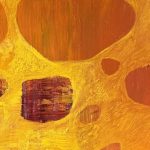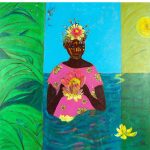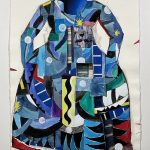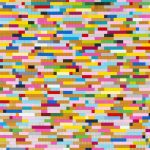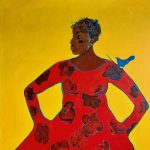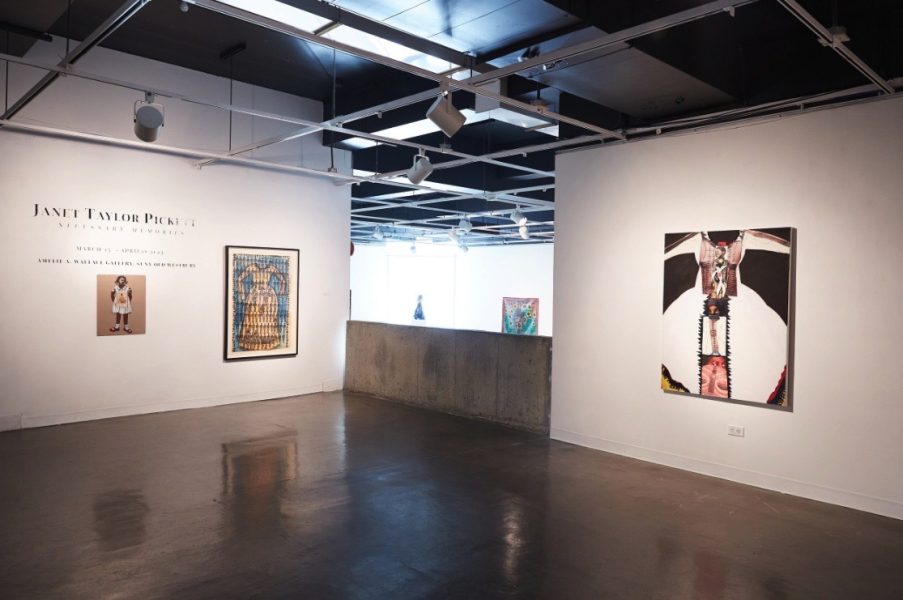


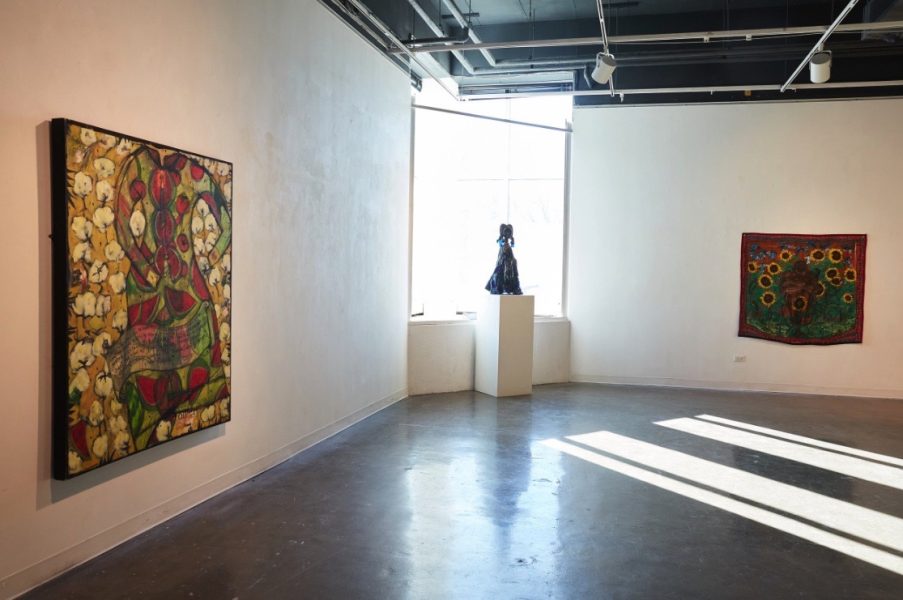
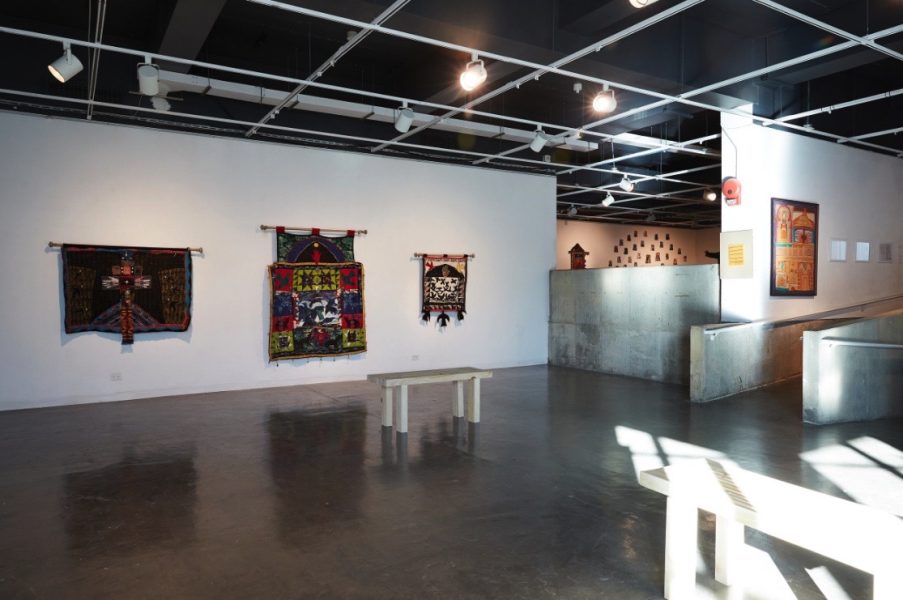

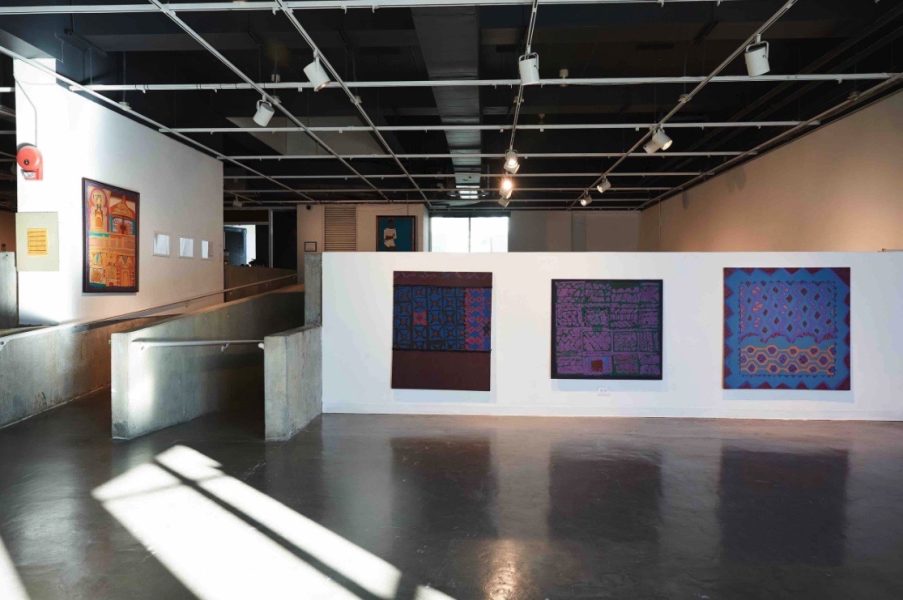
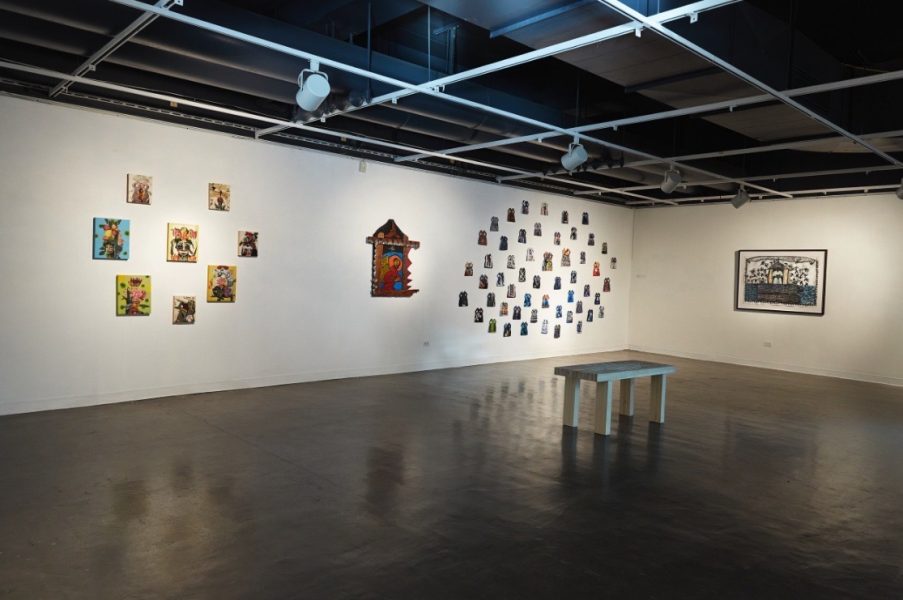
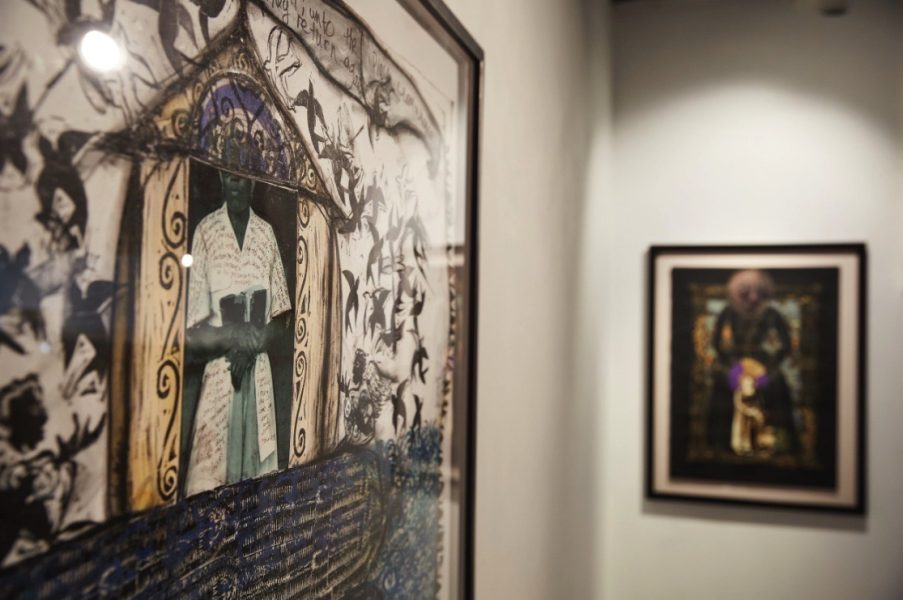
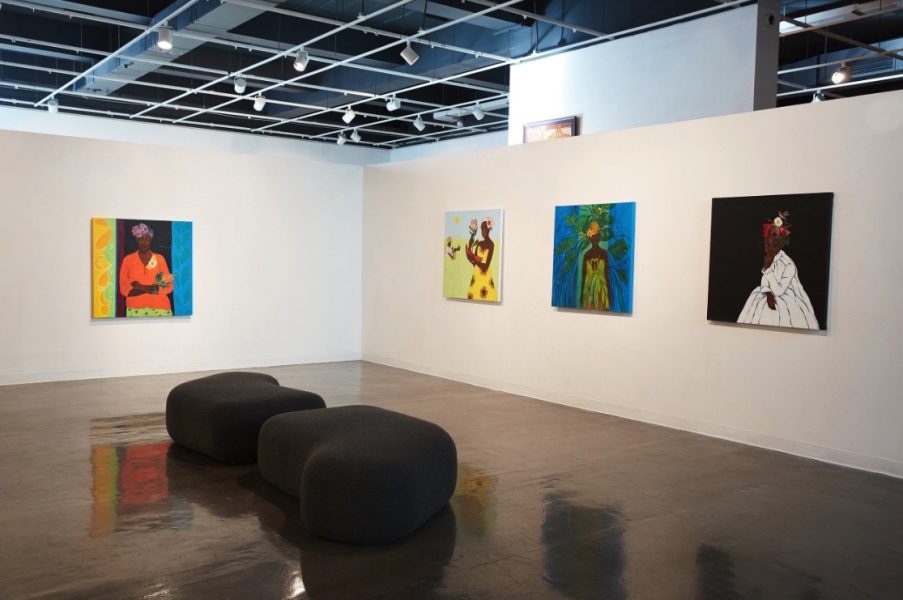
JANET TAYLOR PICKETT: NECESSARY MEMORIES
March 15–April 28, 2023
Amelie A. Wallace Gallery, SUNY College at Old Westbury
Necessary Memories is a solo exhibition of Janet Taylor Pickett that explores her sustained engagement with identity, heritage, and the complexity of lived experience. The exhibition is presented on the occasion of the inauguration of the Black Studies Center and the Black Studies major at the State University of New York at Old Westbury, an initiative representative of the College’s strong social justice mission and racial diversity. A survey of the artist’s prolific body of work from 1972 to 2021, the exhibition showcases over fifty (50) works that externalize the interior life of Janet Taylor Pickett. Intimate and confessional, Necessary Memories pinpoints moments of tension in competing desires for rootedness and freedom. Replete with visual motifs, Janet Taylor Pickett draws on personal biography as a compass to chart a path towards a broader collective heritage that prompts imaginative sustenance for the present.
Janet Taylor Pickett was born in Ann Arbor, Michigan in 1948, the third generation in her maternal family to be raised in that city, a stop on the Underground Railroad. Her father, Dempsey Taylor, Jr., was born in Brownsville, Tennessee, and traveled north during the Great Migration, settling with his family in Ypsilanti, Michigan. This imbrication of personal and shared Black history, concealed in Taylor Pickett’s birthplace, is central to her work. Attuned to the socio-political affordances of her practice, she wields her art as activism: a cautionary tale about the recalcitrance of historical trauma on both the individual and national psyche. Combining quilted constructions, sculptural works, and storytelling through images and handwritten texts, the artist conjures the past with ease, galvanized by her embrace of frustration and pain, and her reckoning with struggle as a touchstone for healing.
HERITAGE
Janet Taylor Pickett’s excavation of her heritage finds its beginnings in her 1972 MFA thesis at the University of Michigan, entitled, black art: reviewing its roots. This project catalyzed the artist’s activist concerns that became the conceptual framework for her artmaking. Adinkra, emblazoned on the book’s cover, was developed by the Ashanti tribes to symbolize various natural and metaphysical concepts. Mobilizing African visual poetics, Taylor Pickett reconceptualizes the relationship between text and image, narrative and myth—tensions and interchanges throughout her art practice.
Taylor Pickett’s thesis was a questionnaire to over three hundred (300) Black artists listed in the Afro- American Slide Depository at the University of Southern Alabama, including Romare Bearden, Benny Andrews, Emma Amos, and Jacob Lawrence, and a compilation of their survey responses. Taylor Pickett and Jacob Lawrence (1917-2000) take Blackness as their formal and conceptual subject. “Migration Series” (1940-41), Lawrence’s ambitious, sixty (60) panel work, focuses on the people at the heart of the great Migration, breaking apart the massive relocation into intimate vignettes. In these works, figures and landscapes are reduced to sparse shapes and abstracted figures. This economy of composition also characterizes “The Skin I’m In” (2016), which reflects Taylor Pickett’s belief that simplified forms convey a wellspring of meaning. A spartan composition, “The Skin I’m In” is a non- figurative portrait that deconstructs the female body, casting it as a flat, white dress sewed with beads, collaged with African masks and ridged tribal markings, and set against Matisse Cutout and a cropped photograph of the artist. In aggregate, these sewed surfaces form an epidermis that literally sutures beauty to pain.
IDENTITY
While deep historical roots and the traditions of Janet Taylor Pickett’s ancestors are at the fore of her conceptual concerns, she assembles these histories to investigate her identity. In “Melon Dress” (2001), the artist enlists a dress form patterned with watermelons and cotton tufts, pejorative symbols yoked to the trauma of slavery, as a metaphor for selfhood. A scroll wraps around the dress featuring text from Larry Vincent Buster’s The Art and History of Black Memorabilia (2000) that elucidates the historical significance of the watermelon:
Watermelon is believed to have originated more than 4,000 years ago in southwestern Africa, where it provided a ready-made water canteen.
It’s high in nutrients and low in calories—just the kind of food to keep slaves alive aboard ship during the transatlantic passage from Africa.
The artist’s figuration of the written word further underlines the socio-historical charge of her work; in coopting and retooling traumatic history by way of watermelon and cotton, she generates a new personal mythology that combines words and repeating visual motifs to forge an alternative canon.
Identity is also a central theme in “An Odyssey” (2014-2015), Taylor Pickett’s milestone wall installation, comprised of over fifty (50) dress forms. Deeply influenced by the color and textiles of Henri Matisse (1869-1954), the artist made cutouts as open secrets; portals to the past that declare their story through a mixture of photographs and collages, while retaining a patina of mysticism and abstraction. Solemn and meditative at times and buoyant and animated at others, the works are, she contends, “conduits and vessels of meaning…visual records, captured memories, observations, and inspirations.” Each dress form cutout compels the viewer to consider its interrelated images, as a myriad of stories reveal themselves. An Odyssey is a matrix for Taylor Pickett’s creative process, a conceptual tool to examine identity politics, and a vessel for transformation.
The artist’s quest to unpack the ancestral heritage nestled in her identity manifests in “Hot House” (1996). An oil painting with collage elements on combined un-stretched canvases, the work is an amalgamation of the artist’s philosophical and aesthetic preoccupations in the early 1990s. Teeming with verdure that presses out of the frame with an anthropomorphic aliveness, the work asserts sexuality, sensuousness, and nature. It bears the influence of Taylor Pickett’s creative conversant, Sam Gilliam (1933-2022), with whom she worked at the Vermont Studio School in 1991. Gilliam, known for his “Drape Paintings,” encouraged Taylor Pickett to “get off the canvas” and wrestle with the inchoate three-dimensionality in her work. A turning point in Taylor Pickett’s practice, the conversation instilled in her a sense of liberation that was as emotional as it was formal.
COMPLEXITY OF LIVED EXPERIENCE
Engaging with beauty and the difficulty of embodiment, Janet Taylor Pickett produces work that speaks to the complexity of lived experience. Art’s capacity to function as a totalizing enactment of life is most acutely evident in her fabric constructions, which she began making after her father’s death in 1992. Quilted on felt, “Healing Shirt” (2007) demonstrates a striking tactility and weight. Its display of talismanic forms and Christian iconography renders the work both an homage to Black faith and a votive object in its own right. In its immersive humanism, Taylor Pickett’s oeuvre resonates with German performance artist Joseph Beuys (1921-1986). Beuys, who constructed environments out of felt and other materials, was enraptured by the ritualistic interactions created by participatory art. Similarly energized by the metaphysical transmissions afforded through visual work, Janet Taylor Pickett affirms art as healing; a channel to a realm deeper and more expansive than the purely visible world. Beuys’ notion of art as a “social sculpture,” a shared Happening that can reshape society and culture, is taken up by Taylor Pickett. The artist uses Blackness as a “social sculpture”; her embodied experience as an African American person is her art.
Aesthetic and existential arrival are realized in “She Blooms in Her Own Time” (2021). [Pic 7] This self- portrait enacts the apotheosis of self-actualization; the artist-as-subject is endowed with full agency and regards the viewer with a gaze that harbors the command of a mystic, seeing through and beyond the viewer. Flanked by slabs of saturated color, she deploys orange burnt sienna, the skin tone that resembles her father’s tanned forearm, and that she uses to depict all of her subjects. While Matisse clearly figures as a creative interlocutor, the work is utterly authentic in its articulation of Taylor Pickett’s distinct narrative voice. As the conceptual linchpins of the exhibition, “Healing Shirt” and “She Blooms in her Own Time” confer that Necessary Memories is seeing the life of Janet Taylor Pickett. These two works posit the convergence of the artist’s social, ethical, and metaphysical commitments with her blossoming as an artist. As she erases boundaries to create work that is relatable and transcendental, Taylor Pickett offers a visual scripture that is entwined with her own becoming.
Necessary Memories affirms how art is a physical experience, and a public one—an impulse that is intuitive, introspective, and geared towards the world outside oneself. Sensitive and visceral, Taylor Pickett delivers a narrative of mythic proportions through her radiant, experimental, and intensely articulate works. History suffuses Janet Taylor Pickett’s art. As sustained visual poems, the paintings, collages, and sewed works in Necessary Memories probe a personal and collective past to posit a distinctly Black mythology of Self. Multi-textured and multi-dimensional, with vibrant color and unexpected juxtapositions, Taylor Pickett’s work is a serious intellectual interrogation of beauty, nature, and the human condition. Galvanized by the socio-political activities in her formative years, Taylor Pickett began to formulate “an aesthetic language, a visual synergy” that spoke to the demands of the historical moment. The artist’s activist concerns remain a through-line in her practice, as recent paintings build upon the commitments and convictions articulated in her early work. Necessary Memories traces the artist’s swan dive into the murky waters of both her own and her country’s past, and her ultimate resurfacing, clear-eyed, with a deeply embodied sense of truth in her art. Janet Taylor Pickett is the artist, and Janet Taylor Pickett is the oeuvre.
Dr. Jennifer Baahng, Guest Curator
Related:

Janet Taylor Pickett is included in Century: 100 Years of Black Art at MAM
Categories: exhibitions
Tags: Janet Taylor Pickett
